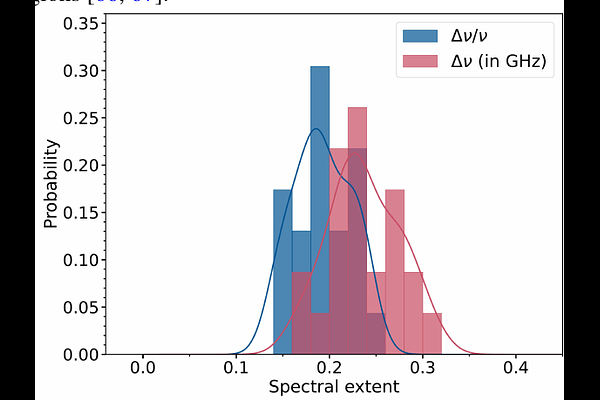Multi-year Polarimetric Monitoring of Four CHIME-Discovered Repeating Fast Radio Bursts with FAST

Multi-year Polarimetric Monitoring of Four CHIME-Discovered Repeating Fast Radio Bursts with FAST
Yi Feng, Yong-Kun Zhang, Jintao Xie, Yuan-Pei Yang, Yuanhong Qu, Dengke Zhou, Di Li, Bing Zhang, Weiwei Zhu, Wenbin Lu, Jiaying Xu, Chenchen Miao, Shiyan Tian, Pei Wang, Ju-Mei Yao, Chen-Hui Niu, Jiarui Niu, Heng Xu, Jinchen Jiang, Dejiang Zhou, Zenan Liu, Chao-Wei Tsai, Zigao Dai, Xuefeng Wu, Fayin Wang, Jinlin Han, Kejia Lee, Renxin Xu, Yongfeng Huang, Yuanchuan Zou, Jinhuang Cao, Xianglei Chen, Jianhua Fang, Dongzi Li, Ye Li, Wanjin Lu, Jiawei Luo, Jintao Luo, Rui Luo, Fen Lyu, Bojun Wang, Weiyang Wang, Qin Wu, Mengyao Xue, Di Xiao, Wenfei Yu, Jianping Yuan, Chunfeng Zhang, Junshuo Zhang, Lei Zhang, Songbo Zhang, Rushuang Zhao, Yuhao Zhu
AbstractIn this study, we report multi-year polarization measurements of four repeating FRBs initially discovered by CHIME: FRBs~20190117A, 20190208A, 20190303A, and 20190417A. We observed the four repeating FRBs with FAST, detecting a total of 66 bursts. Two bursts from FRB~20190417A exhibit a circular polarization signal-to-noise ratio greater than 7, with the highest circular polarization fraction recorded at 35.7%. While the bursts from FRBs 20190208A and 20190303A are highly linearly polarized, those from FRBs~20190117A and 20190417A show depolarization due to multi-path propagation, with \sigma_{\mathrm{RM}} = 2.78 \pm 0.05 rad m$^{-2}$ and 5.19 \pm 0.09 rad m$^{-2}$, respectively. The linear polarization distributions among five repeating FRB--FRBs~20190208A, 20190303A, 20201124A, 20220912A, and 20240114A--are nearly identical but show distinct differences from those of non-repeating FRBs. FRBs~20190117A, 20190303A, and 20190417A exhibit substantial rotation measure (RM) variations between bursts, joining other repeating FRBs in this behavior. Combining these findings with published results, 64% of repeating FRBs show RM variations greater than 50 rad m$^{-2}$, and 21\% exhibit RM reversals. A significant proportion of repeating FRBs reside in a dynamic magneto-ionic environment. The structure function of RM variations shows a power-law index of $\gamma \sim (0-0.8)$, corresponding to a shallow power spectrum $\alpha = -(\gamma + 2) \sim -(2.0-2.8)$ of turbulence, if the RM variations are attributed to turbulence. This suggests that the variations are dominated by small-scale RM density fluctuations. We perform K-S tests comparing the RMs of repeating and non-repeating FRBs, which reveal a marginal dichotomy in the distribution of their RMs.We caution that the observed dichotomy may be due to the small sample size and selection biases.